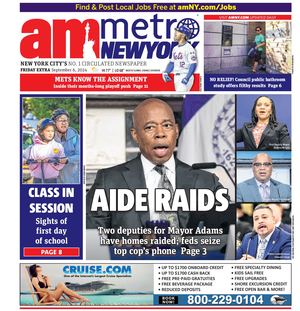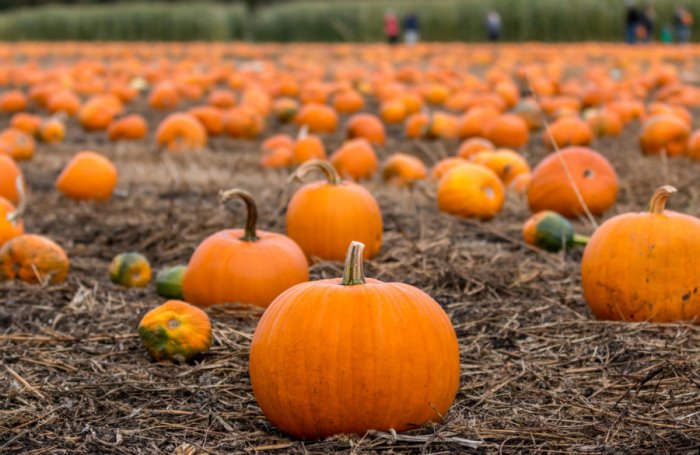By Sara G. Levin
Leave it to Maira Kalman to turn a book about grammar into not one, but two works of art.
Known at once for her playful children’s books, New Yorker covers, Kate Spade bags and Isaac Mizrahi prints, the Manhattanite recently added to her varied portfolio an illustrated version of William Strunk Jr. and E.B. White’s “The Elements of Style” and an opera based on the book. While Kalman has always enjoyed dipping her fingers in several different media at once, a book about a typically boring subject, grammar, might at first seem like an odd choice for the spunky painter, who grew up speaking Hebrew.
“If you learn a second language, there’s a sense of insecurity that you don’t know all the rules,” explained Kalman, who immigrated with her family from Tel Aviv in 1954. “But it’s also a source of freedom because you need to experiment with the language. A naivité propels you to learn more.” At school, the artist became enamored with words, she said, and began using images as a way to elaborate funny stories, poems or phrases.
“Painting was always part of the dialogue,” Kalman said.
When the illustrator first read William Strunk Jr. and E.B. White’s composition bible four years ago, it resonated with her affinity for language. The pictures that adorn her new version interpret famous maxims like “make every word tell” quite literally. For instance, opposite one of the illustrator’s favorite instructive sentences, ‘Poly loves cake more than she loves me,’ a bonnet-clad women in a pink 18th century gown looks wistfully over her shoulder at a tall pink cake, snubbing a suitor at her side.
“I see this book as a high point,” Kalman said. “Maybe because it’s for adults, it’s a different aspect of my art. Maybe I was ready for a certain kind of maturity, without loosing a sense of humor.”
Like language, humor has had a significant influence on Kalman’s work. In 1985, she decided to transform David Byrne’s song, “Stay Up Late” into illustrations; it became her first children’s book. Kalman continued to work on children’s books and soon began writing her own. At a dinner party one night, she befriended the equally eccentric Isaac Mizrahi, who ultimately asked Kalman to design fabric for him.
“I was such a fan of her illustrations,” Mizrahi said. “I also love working with her and being around her. She’s got such a flair for the absurd, and that’s sexy. Plus we both adore color.” In turn, Mizrahi introduced her to his friend, Mark Morris, who needed someone to design the sets for his 2000 production of “Four Saints, Three Acts.”
“I love that she has such a kooky and fabulous sense of humor,” said Morris. “I’m way too old to read the children’s books, but I have friends with kids who worship them.”
At 56, Kalman’s oeuvre includes a number of recognizable images, like the “New Yorkistan” New Yorker cover, which depicts the city divided into neighborhoods like “Hiphopabad” and “Cold Turkeystan.” She’s also designed clocks, umbrellas, window displays, and a book about “vernacular fashion.” Still, her latest work reflects a subtle, yet distinct circle back to her childhood.
As a teenager, Kalman attended Manhattan’s High School of Music & Art and Performing Arts (the one featured in “Fame!”) for piano. She also spent four years in the chorus, which helps explain why she commissioned friend Nico Muhly to turn her “Elements of Style” into an opera.
“As I painted, I was singing the words,” Kalman said of the progression from grammar book to song. “It’s a goofy combination, like the Mad Hatter’s Tea Party, but the music is very heartfelt. It’s amazing how the things you love when you’re young reappear in your life.” The opera, which was performed at The New York Public Library’s main branch, used the “Omit Needless Words orchestra” and included Kalman and her friends playing instruments like egg-beaters and slinkies.
Language continues to be the common thread connecting all her artwork, though. When Kalman’s mother passed away over a year ago, she began to sew in her memory. Her embroidery, which she admits expresses darker emotions than her other work, is now on view at the Julie Saul gallery in Chelsea through Dec. 10. At the show’s reception, Saul swept her arm across the span of canvases to indicate a progression in Kalman’s silk embroidery on cotton. Simple stitches trace figures similar to the ones in her children’s book illustrations, but her choice of phrases, like “Seize the Day,” or stanzas from a poem by Goethe, are thoroughly grown up.
“Honestly,” said Saul, referring to the sewn fabrics, “I didn’t know what to think of this work when I first saw it. It was so different from her paintings.”


































